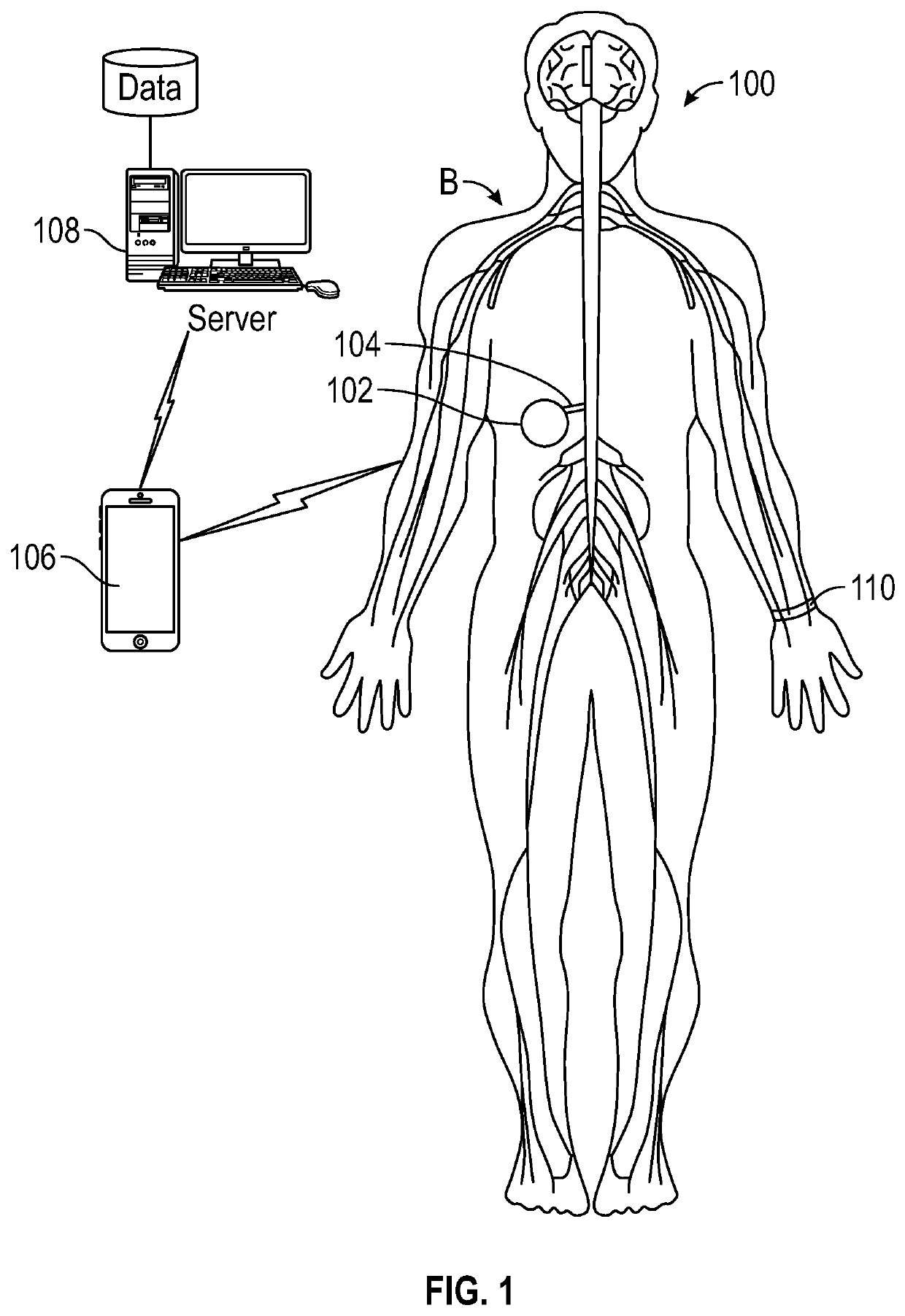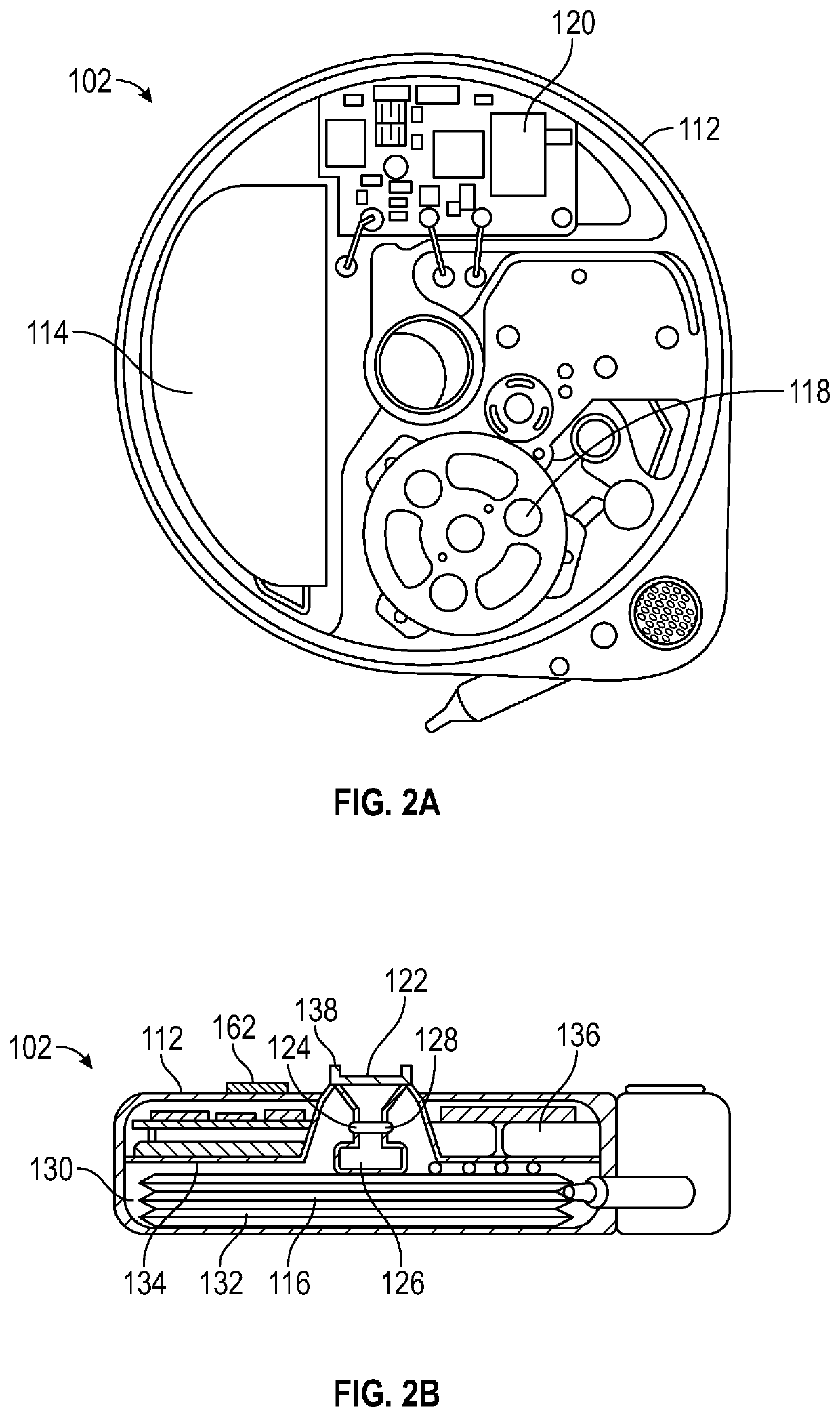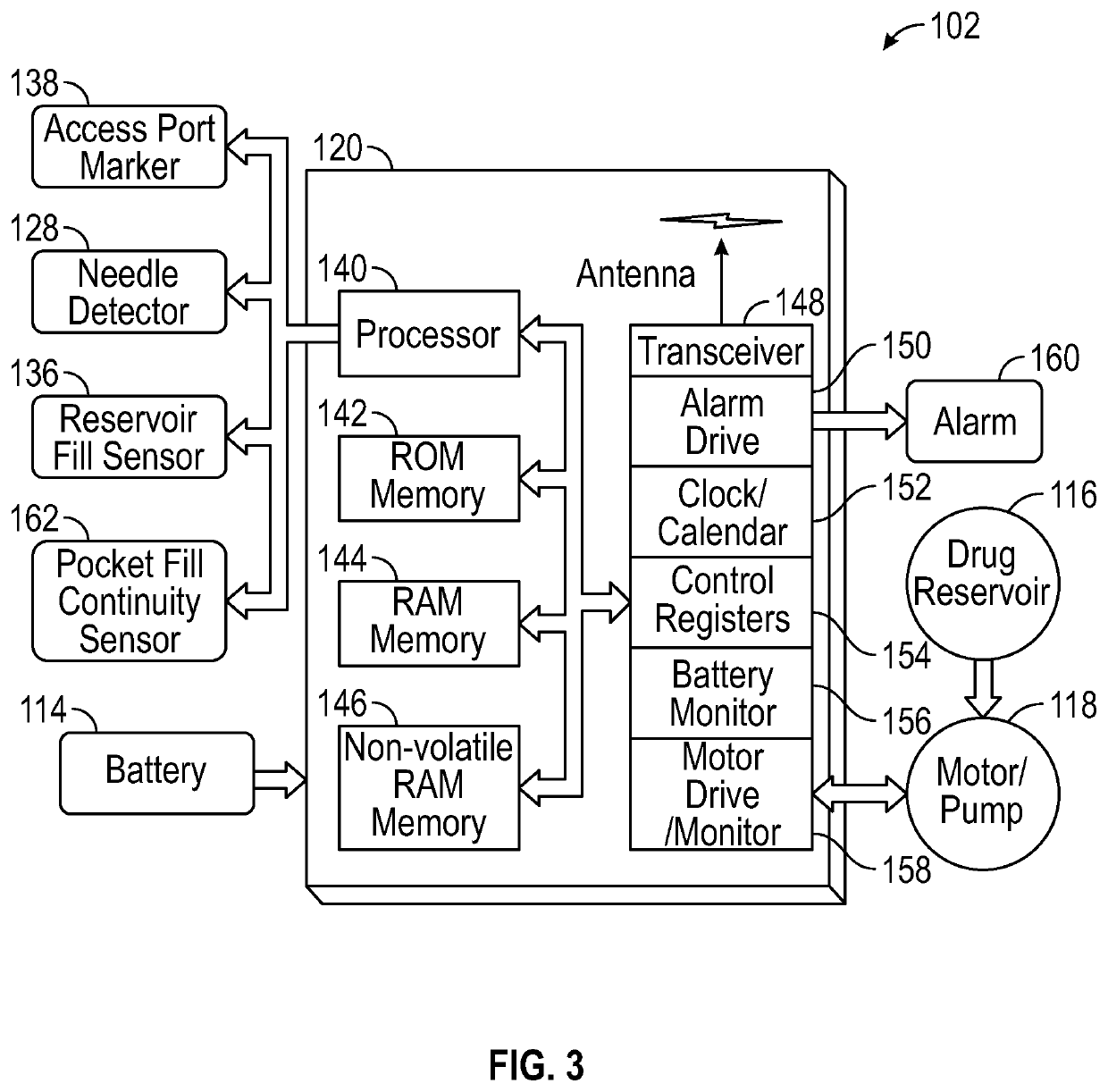Method to detect inadvertent delivery of drug to a subcutaneous pocket
a subcutaneous pocket and drug technology, applied in the direction of other medical devices, process and machine control, instruments, etc., can solve problems such as patient death, and achieve the effect of improving the identification of the access por
- Summary
- Abstract
- Description
- Claims
- Application Information
AI Technical Summary
Benefits of technology
Problems solved by technology
Method used
Image
Examples
Embodiment Construction
[0028]Referring to FIG. 1, a medical system 100 configured to alert caregivers to the possibility of an inadvertent injection of infusate directly into tissue surrounding an implantable medical device 102 is depicted in accordance with an embodiment of the disclosure. The medical system 100 can include an implantable catheter 104, which in some embodiments can be in fluid communication with the implantable medical device, which can be either of an implantable pump or port. As depicted, the implantable device 102 can be implanted within the body B of a patient, for example, in an interior torso cavity or in proximity to the patient's ribs or cranially for the introduction of infusate into the patient (e.g., within an intrathecal space, intracranial space, pulmonary artery, etc.) for targeted delivery of infusate. In some embodiments, the implantable device 102 can be placed subcutaneously, and can be held in position by sutures or other retaining features.
[0029]In some embodiments, t...
PUM
 Login to View More
Login to View More Abstract
Description
Claims
Application Information
 Login to View More
Login to View More - R&D
- Intellectual Property
- Life Sciences
- Materials
- Tech Scout
- Unparalleled Data Quality
- Higher Quality Content
- 60% Fewer Hallucinations
Browse by: Latest US Patents, China's latest patents, Technical Efficacy Thesaurus, Application Domain, Technology Topic, Popular Technical Reports.
© 2025 PatSnap. All rights reserved.Legal|Privacy policy|Modern Slavery Act Transparency Statement|Sitemap|About US| Contact US: help@patsnap.com



